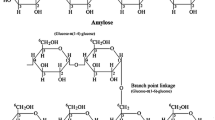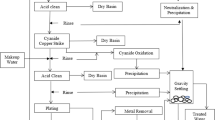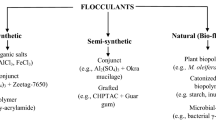Abstract
The objective of this study was to understand the effect of operating parameters, including ultrasound amplitude, spraying pressure, nozzle orifice diameter, and initial cell concentration on microalgal cell disruption and lipid extraction in an ultrasonic nozzle spraying system (UNSS). Two algal species including Scenedesmus dimorphus and Nannochloropsis oculata were evaluated. Experimental results demonstrated that the UNSS was effective in the disruption of microalgal cells indicated by significant changes in cell concentration and Nile red-stained lipid fluorescence density between all treatments and the control. It was found that increasing ultrasound amplitude generally enhanced cell disruption and lipid recovery although excessive input energy was not necessary for best results. The effect of spraying pressure and nozzle orifice diameter on cell disruption and lipid recovery was believed to be dependent on the competition between ultrasound-induced cavitation and spraying-generated shear forces. Optimal cell disruption was not always achieved at the highest spraying pressure or biggest nozzle orifice diameter; instead, they appeared at moderate levels depending on the algal strain and specific settings. Increasing initial algal cell concentration significantly reduced cell disruption efficiency. In all UNSS treatments, the effectiveness of cell disruption and lipid recovery was found to be dependent on the algal species treated.







Similar content being viewed by others
References
Brennan, L., & Owende, P. (2010). Biofuels from microalgae—a review of technologies for production, processing, and extractions of biofuels and co-products. Renewable and Sustainable Energy Reviews, 14(2), 557–577.
Scott, A. S., Davey, M. P., Dennis, J. S., Horst, I., Howe, C. J., Lea-Smith, D. J., & Smith, A. G. (2010). Biodiesel from algae: challenges and prospects. Current Opinion in Chemical Biology, 21, 277–286.
Benemann, J. R. (1997). CO2 mitigation with microalgae systems. Energy Conversion and Management, 38, S475–S479.
Shen, Y., Pei, Z. J., Yuan, W. Q., & Mao, E. R. (2009). Effect of nitrogen and extraction method on algae lipid yield. International Journal of Agricultural and Biological Engineering, 2(1), 51–57.
Nonomura, A.M., (1987). Process for producing a naturally-derived carotene/oil composition by direct extraction from algae. U. S. Patent # 4,680,314.
Rodríguez-Ruiz, J., Belarbi, E. H., Sánchez, J. L. G., & Alonso, D. L. (1998). Rapid simultaneous lipid extraction and transesterification for fatty acid analyses. Biotechnology Techniques, 12(9), 689–691.
Lee, S. J., Yoon, B. D., & Oh, H. M. (1998). Rapid method for the determination of lipid from the green alga Botryococcus braunii. Biotechnology Techniques, 12(7), 553–556.
Mahvi, A. H., & Dehghani, M. H. (2005). Evaluation of ultrasonic technology in removal of algae from surface waters. Pakistan Journal of Biological Sciences, 8(10), 1457–1459.
Tang, J. W., Wu, Q. Y., Hao, H. W., Chen, Y. F., & Wu, M. S. (2003). Growth inhibition of the cyanobacterium Spirulina (Arthrospira) platensis by 1.7 MHz ultrasonic irradiation. Journal of Applied Phycology, 15, 37–43.
Tang, J. W., Wu, Q. Y., Hao, H. W., Chen, Y. F., & Wu, M. S. (2004). Effect of 1.7 MHz ultrasound on a gas-vacuolate cyanobacterium and a gas-vacuole negative cyanobacterium. Colloids and Surfaces. B, Biointerfaces, 36, 115–121.
Ahn, C. Y., Park, M. H., Joung, S. H., Kim, H. S., Jang, K. Y., & Oh, H. M. (2003). Growth inhibition of cyanobacteria by ultrasonic radiation: laboratory and enclosure studies. Environmental Science & Technology, 37, 3031–3037.
Wiyarno, B., Yunus, R. M., & Mel, M. (2010). Ultrasound extraction assisted (UEA) of oil from microalgae (Nannochloropsis sp.). International Journal of Engineering Science, 1(3), 65–71.
Wiyarno, B., Yunus, R. M., & Mel, M. (2011). Extraction of algae oil from Nannochloropsis sp.: a study of soxhlet and ultrasonic-assisted extraction. Journal of Applied Sciences, 11(21), 3607–3612.
Wang, M., Yuan, W. Q., Jiang, X. N., Jing, Y., & Wang, Z. C. (2014). Disruption of microalgal cells using high-frequency focused ultrasound. Bioresource Technology, 153, 315–321.
Ruff, G. A., Sagar, A. D., & Faeth, G. M. (1989). Structure and mixing properties of pressure-atomized sprays. AIAA Journal, 27(7), 901–908.
Kourmatzis, A., Pham, P. X., & Masri, A. R. (2013). Air assisted atomization and spray density characterization of ethanol and a range of biodiesels. Fuel, 108, 758–770.
Faeth, G. M., Hsiang, L. P., & Wu, P. K. (1995). Structure and breakup properties of sprays. International Journal of Multiphase Flow, 21, 99–127.
Dumouchel, C. (2008). On the experimental investigation on primary atomization of liquid streams. Experiments in Fluids, 45, 371–422.
Dalmoro, A., Barba, A. A., Lamberti, G., & d’Amore, M. (2012). Intensifying the microencapsulation process: ultrasonic atomization as an innovative approach. European Journal of Pharmaceutics and Biopharmaceutics, 80, 471–477.
Converti, A., Casazza, A. A., Ortiz, E. Y., Perego, P., & Borghi, M. D. (2009). Effect of temperature and nitrogen concentration on the growth and lipid content of Nannochloropsis oculata and Chlorella vulgaris for biodiesel production. Chemical Engineering and Processing, 48, 1146–1151.
Sorokin, C., & Krauss, R. W. (1958). The effect of light intensity on the growth rates of green algae. Plant Physiology, 33, 109–113.
Shaaban, A. M., & Duerinckx, A. J. (2000). Wall shear stress and early atherosclerosis: a review. American Journal of Roentgenology, 174, 1657–1665.
Kelemen, M. V., & Sharpe, J. E. (1979). Controlled cell disruption: a comparison of the forces required to disrupt different micro-organisms. Journal of Cell Science, 35(1), 431–441.
Gerde, J. A., Montalbo-Lomboy, M., Yao, L. X., Grewell, D., & Wang, T. (2012). Evaluation of microalgae cell disruption by ultrasonic treatment. Bioresource Technology, 125, 175–181.
Ramanan, R. N., Tey, B. T., Ling, T. C., & Ariff, A. B. (2009). Classification of pressure range based on the characterization of Escherichia coli cell disruption in high pressure homogenizer. American Journal of Biochemistry and Biotechnology, 5, 21–29.
Halim, R., Harun, R., Danquah, M. K., & Webley, P. A. (2012). Microalgal cell disruption for biofuel development. Applied Energy, 91, 116–121.
Gogate, P. R., Wilhelm, A. M., & Pandit, A. B. (2003). Some aspects of the design of sonochemical reactors. Ultrasonics Sonochemistry, 10, 325–330.
Adam, F., Abert-Vian, M., Peltier, G., & Chemat, F. (2012). “Solvent-free” ultrasound assisted extraction of lipids from fresh microalgae cells: a green, clean and scalable process. Bioresource Technology, 114, 457–465.
Lee, A. K., Lewis, D. M., & Ashman, P. J. (2012). Disruption of microalgal cells for the extraction of lipids for biofuels: processes and specific energy requirements. Biomass and Bioenergy, 46, 89–101.
Chen, W., Zhang, C. W., Song, L. R., Sommerfeld, M., & Hu, Q. (2009). A high throughput Nile red method for quantitative measurement of neutral lipids in microalgae. Journal of Microbiological Methods, 77, 41–47.
Acknowledgments
This research was financially supported by the US National Science Foundation (Award # CMMI-1239078) and the startup fund of North Carolina State University. The authors want to thank Aurizon Ultrasonics for providing the ultrasonic nozzle spraying system and especially Mr. Tom Bett of Aurizon Ultrasonics for his valuable assistance in system setup and testing.
Author information
Authors and Affiliations
Corresponding author
Rights and permissions
About this article
Cite this article
Wang, M., Yuan, W. Microalgal Cell Disruption via Ultrasonic Nozzle Spraying. Appl Biochem Biotechnol 175, 1111–1122 (2015). https://doi.org/10.1007/s12010-014-1350-z
Received:
Accepted:
Published:
Issue Date:
DOI: https://doi.org/10.1007/s12010-014-1350-z




